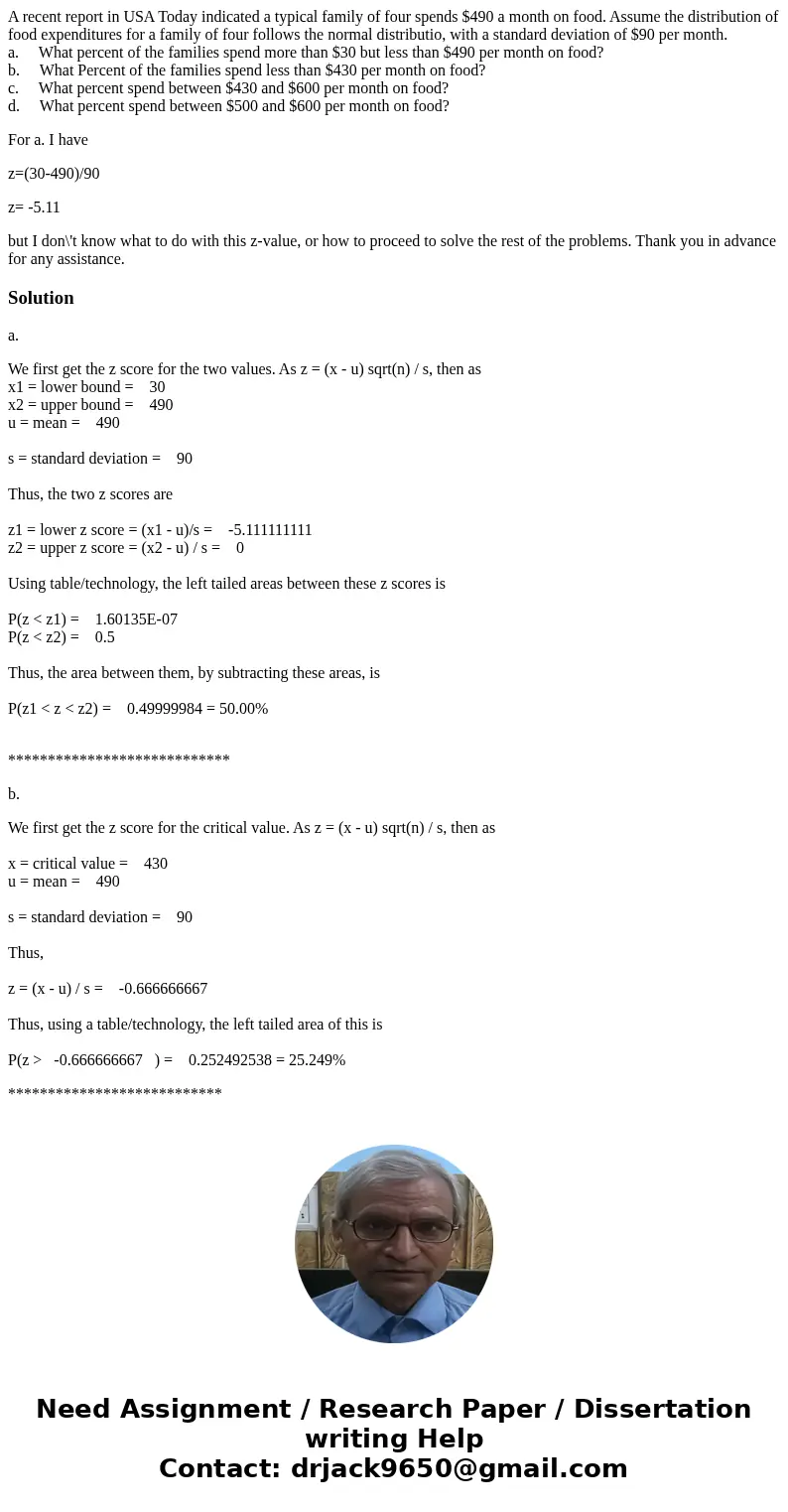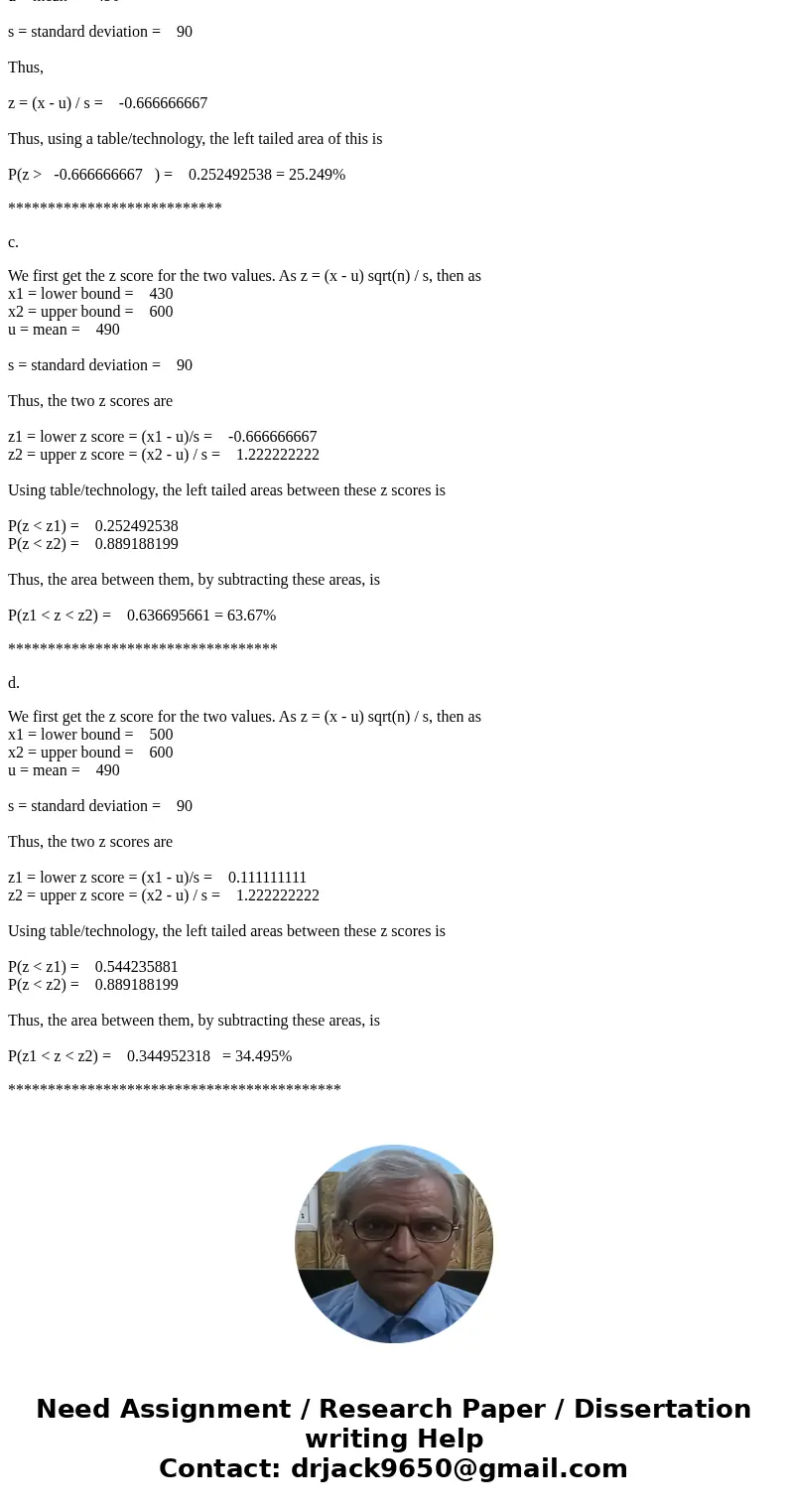A recent report in USA Today indicated a typical family of f
A recent report in USA Today indicated a typical family of four spends $490 a month on food. Assume the distribution of food expenditures for a family of four follows the normal distributio, with a standard deviation of $90 per month.
a. What percent of the families spend more than $30 but less than $490 per month on food?
b. What Percent of the families spend less than $430 per month on food?
c. What percent spend between $430 and $600 per month on food?
d. What percent spend between $500 and $600 per month on food?
For a. I have
z=(30-490)/90
z= -5.11
but I don\'t know what to do with this z-value, or how to proceed to solve the rest of the problems. Thank you in advance for any assistance.
Solution
a.
We first get the z score for the two values. As z = (x - u) sqrt(n) / s, then as
x1 = lower bound = 30
x2 = upper bound = 490
u = mean = 490
s = standard deviation = 90
Thus, the two z scores are
z1 = lower z score = (x1 - u)/s = -5.111111111
z2 = upper z score = (x2 - u) / s = 0
Using table/technology, the left tailed areas between these z scores is
P(z < z1) = 1.60135E-07
P(z < z2) = 0.5
Thus, the area between them, by subtracting these areas, is
P(z1 < z < z2) = 0.49999984 = 50.00%
****************************
b.
We first get the z score for the critical value. As z = (x - u) sqrt(n) / s, then as
x = critical value = 430
u = mean = 490
s = standard deviation = 90
Thus,
z = (x - u) / s = -0.666666667
Thus, using a table/technology, the left tailed area of this is
P(z > -0.666666667 ) = 0.252492538 = 25.249%
***************************
c.
We first get the z score for the two values. As z = (x - u) sqrt(n) / s, then as
x1 = lower bound = 430
x2 = upper bound = 600
u = mean = 490
s = standard deviation = 90
Thus, the two z scores are
z1 = lower z score = (x1 - u)/s = -0.666666667
z2 = upper z score = (x2 - u) / s = 1.222222222
Using table/technology, the left tailed areas between these z scores is
P(z < z1) = 0.252492538
P(z < z2) = 0.889188199
Thus, the area between them, by subtracting these areas, is
P(z1 < z < z2) = 0.636695661 = 63.67%
**********************************
d.
We first get the z score for the two values. As z = (x - u) sqrt(n) / s, then as
x1 = lower bound = 500
x2 = upper bound = 600
u = mean = 490
s = standard deviation = 90
Thus, the two z scores are
z1 = lower z score = (x1 - u)/s = 0.111111111
z2 = upper z score = (x2 - u) / s = 1.222222222
Using table/technology, the left tailed areas between these z scores is
P(z < z1) = 0.544235881
P(z < z2) = 0.889188199
Thus, the area between them, by subtracting these areas, is
P(z1 < z < z2) = 0.344952318 = 34.495%
******************************************


 Homework Sourse
Homework Sourse